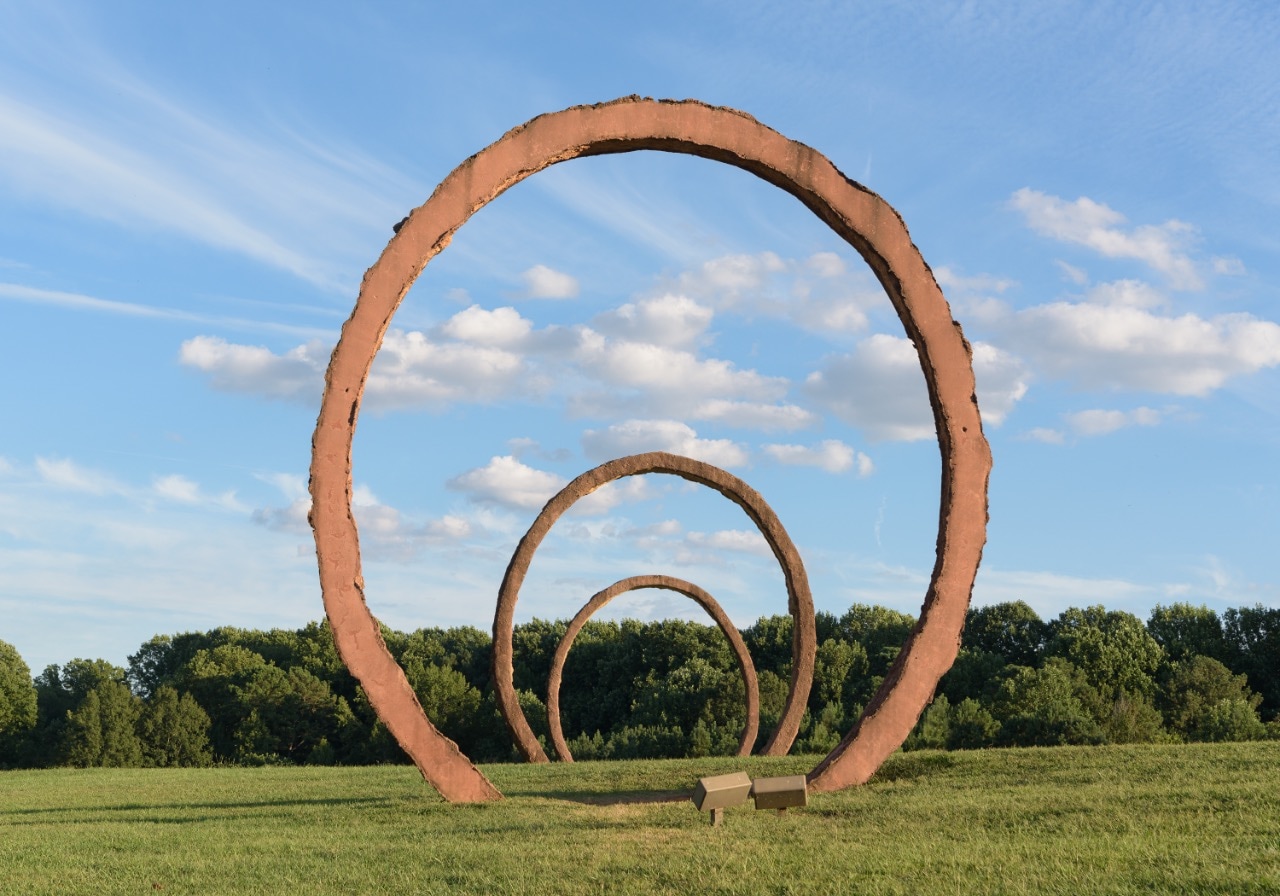Gyre
Thomas Sayre[[translate(episode,'title')]]
[[translate(episode,'audioCredit') || translate(episode,'credit')]][[translate(episode,'title')]]
[[translate(episode,'audioCredit') || translate(episode,'credit')]]Audio Transcript
Hello. I’m Thomas Sayre. I’m the artist who made *Gyre*, which was created on this very site in 1999. *Gyre* was built in the adjacent ground, right here, with a technique which has become known as “earth casting.” Each of these tall, 18-foot-high ellipses were born in trenches which were dug using a backhoe as well as feet and hands — my own, as well as those of a number of friends and volunteers, and even a daughter. In these dug molds, steel was then placed, followed by concrete poured directly into the earth. Once the concrete was cured to its full strength, each of these three forms were pulled out of the ground with a large crane and placed vertically on waiting foundations.
*Gyre* derives its life and its spirit from an interaction between the intentions of the human hand, my hand, and the grain of nature, what’s in the ground itself. The sculpture is the product of a careful collaboration of what I wanted to see on this site, as an artist, and the rich marks and character provided by the earth and the terrain itself. All the rocks, color, and much of the texture which lives in this particular earth intersected with the teeth marks of the backhoe and the impressions of feet and the mark of shovels and other tools which carved these molds.
The earth even had a say in the illusion of the height difference between the three elliptical forms. The tops of all three rings are completely level with each one. The height difference only appears to exist because the land beneath *Gyre* undulates, as formed initially by glaciers and other geological forces many centuries ago, and then by farmers during the 1800s.
The title, *Gyre*, is a little-used English word that was in some ways popularized by the poet W. B. Yeats. Yeats compared the cyclical nature of history to a gyre, a spiraling form extending into the air, where, as time goes on, we arrive again to where we started, yet not quite. We don’t land exactly where we began. This gyre in the NCMA Park is a horizontal gyre, corkscrewing its way through the gentle slopes of the land, drawing attention to how time has radically changed the use and nature of this spot. *Gyre* clearly speaks of art interacting directly with its environs. *Gyre* speaks to the necessity of collaboration between humans and the earth on which we live, and isn’t this really what underlines much of the goals and intentions of the Ann and Jim Goodnight Park?
As the Museum continues to create unique interactions between nature and art, it must work, as does *Gyre*, with the land itself to expand sustainably, conserve natural resources, and protect its inhabitants.
Thomas Sayre, *Gyre*, 1999, three ellipses of concrete, colored with iron oxide, reinforced with steel, and mottled with dirt residue from earth casting, overall length 150 ft., Gift of Artsplosure, City of Raleigh, and various donors
